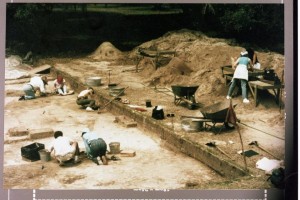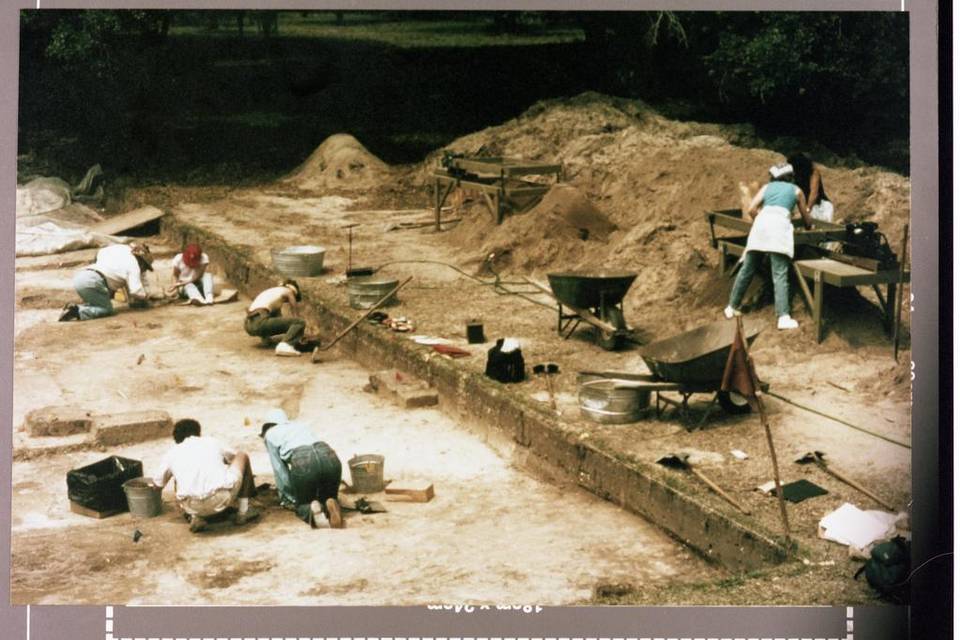Technology helped archaeologists finally find the remains of a 16th-century Spanish fort what is now Marine Corps Recruit Deport Parris Island.

Archaeologist teams from The South Carolina Institute of Archaeology and Anthropology excavate the site of Santa Elena, a 16th century Spanish settlement, on the Parris Island Marine Corps Golf Course from 1979 to 1985. This photo is titled, “Santa Elena excavation”. Parris Island Museum
Archaeologists had been looking for San Marcos, one of several forts built on the Santa Elena settlement, for more than 20 years. The remains were discovered in June using radar and magnetometers, a University of South Carolina news release said.
The fort was founded in 1577 by Pedro Menedez Marquez. The outpost went up in six days to protect against an attack by Native Americans.
University of South Carolina archaeologist Chester DePratter and University of Georgia anthropologist Victor Thompson have been working on the Santa Elena site since 2014.
The settlement was founded in 1566 by Pedro Menendez de Aviles. Its whereabouts remained a mystery until 1979, when archaeologists found evidence while digging on the Parris Island golf course.
The general location of the fort had been noted using documents archived in Spain. Traditional digging methods had failed to find the fort, the release said.
The discovery will be published this week in the Journal of Archeological Science: Reports, according to the release.



